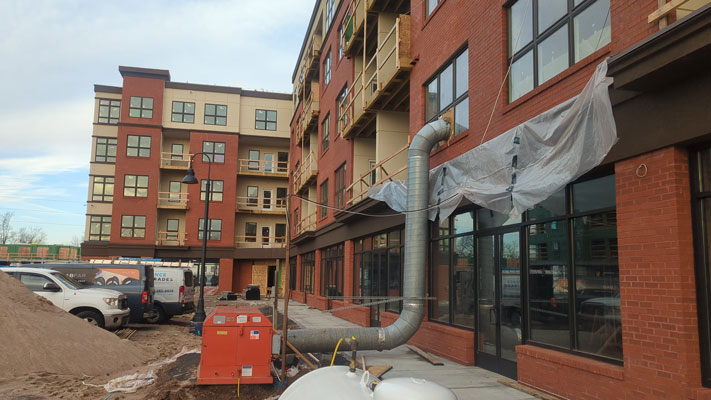
Guide to Using Temporary Heaters at Construction Sites
Construction sites operate all year round, which often means having to confront freezing conditions and harsh weather. Frigid winter conditions can slow and delay projects while putting the health of workers at risk.
Temporary heaters for construction sites are essential, and a heating strategy is critical for both safety and comfort.
Tips for Getting the Most from Temporary Heaters for a Job Site
Temporary heating solutions play a critical role in work efficiency during cold weather. They allow temperature-critical processes to continue while keeping workers comfortable and safe. Improper use, however, can lead to property damage from improper combustion, worker injury from carbon monoxide poisoning, or fires.
Here are a few considerations for formulating an effective and safe construction site temporary heating strategy.
Choose the Right Heater for the Job
Make sure you pick rental heating equipment that is right for your site. This involves considering the goal of using heat. However, knowing the heater type you need may take some discussion with a temporary heating specialist.
For example:
- If you have completed occupied space that needs heat, an indirect fired heater is the right choice.
- Direct-fired heaters are the most efficient for keeping the job site at a constant temperature.
- Portable electric heaters are suitable if you require a temporary heating solution in a small space.
The heating specialist will also advise on the best size depending on the volume of space to be heated and how often the air is changed in the space through pressurization. A heater that is too small for the area will continue running and burning more fuel, which will cost you more. The amount of British Thermal Units (BTUs) required depends on the tanks or piping for natural gas. In the worst-case scenario at 40 degrees below zero, our heater will burn the maximum BTU rating.
Consider the Construction Site’s Layout
The site layout and heater placement can optimize the performance of your temporary heating rental. Placing the heaters in spots near the base of the building and away from elevator shafts and staircases will heat the space faster. And, since heat rises, you can use fewer heaters the higher up you get in a multi-level building.
Eliminate Use of Fans and Blowers
Look for temporary heaters that are easy to place outside your site. These heaters pressurize a building, which helps negate the use of extra equipment such as fans and blowers.
In cases where the building is broken up, consider using industrial air movers and fans. Broken-up or cut-up construction sites have many small rooms and twisted hallways.
The air movers circulate the heat around your construction site to improve the efficiency of construction heating equipment. You may tumble these air movers, a process where they are lofted towards the ceiling to force warm air back down into cold spots.
Insulate Your Work Space
Properly insulating a construction site may be difficult, but optimizing fuel usage on your job site heater is essential. Use plywood and poly over windows and other open spaces on the site. Some construction crews will tent an entire workspace to keep in the heat.
Use a Thermostat
Do not let the heater run! Instead, use the thermostat to regulate the space temperature and optimize performance.
Get Expert Help
These are basic suggestions for using a temporary heater at your construction site. Consult a BABFAR temporary heating specialist who will take specific factors into account to create a customized heating strategy, getting you the most out of your heating rental solution.
For more questions about different heaters or renting temporary heaters for your site, contact BABFAR today.




